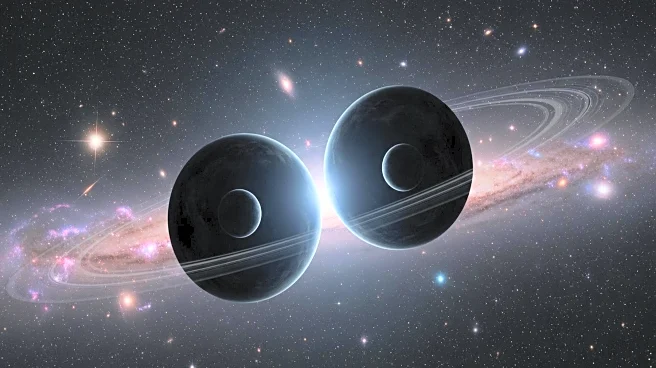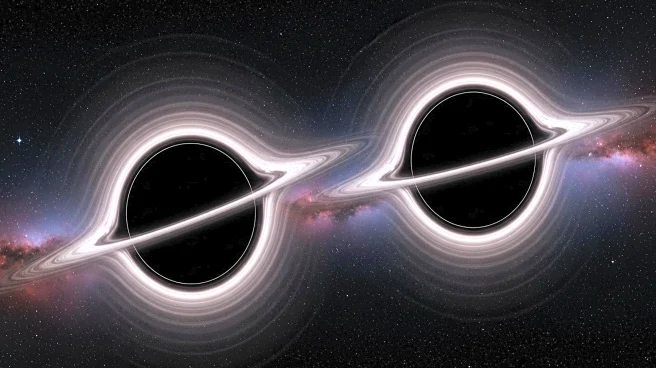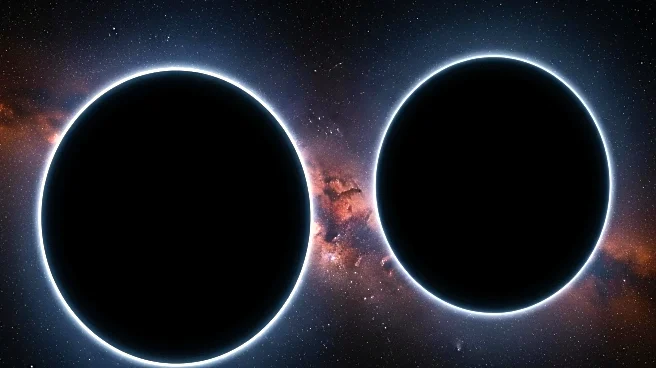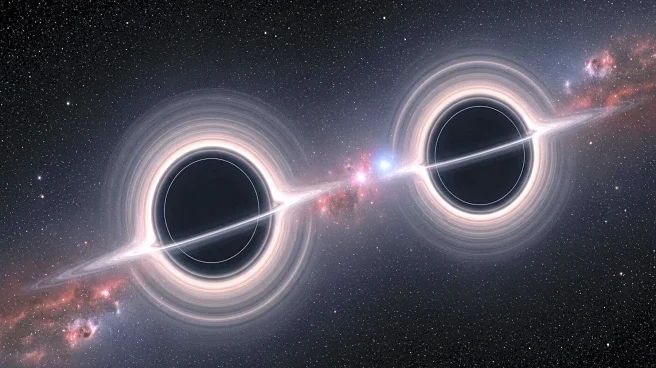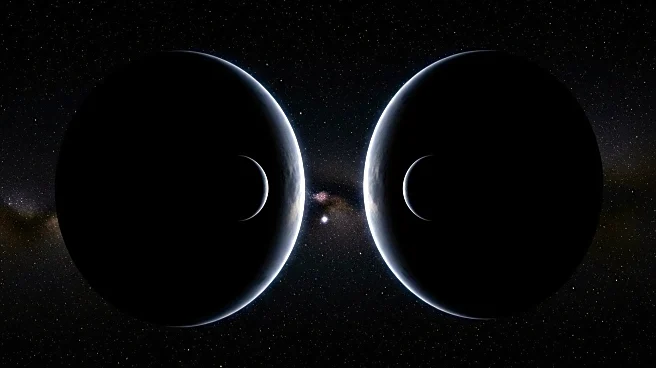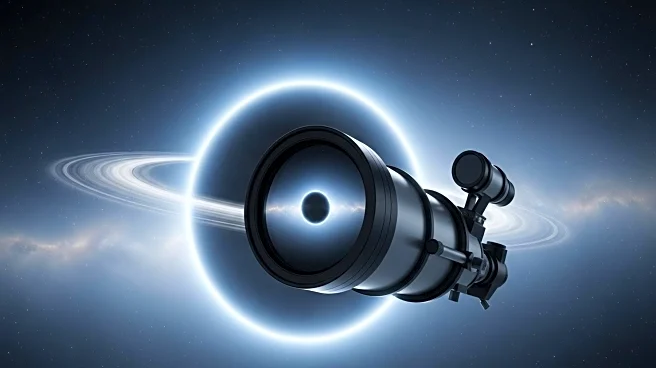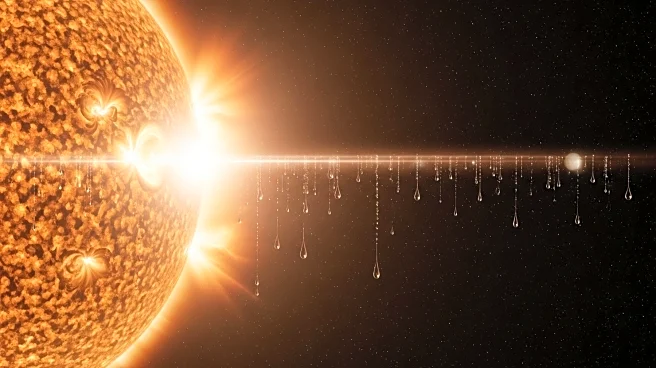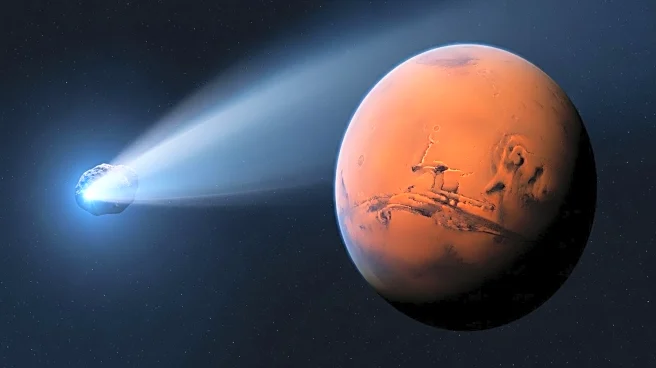What's Happening?
Finnish scientists have successfully captured the first definitive image of two black holes orbiting each other, providing groundbreaking evidence that these cosmic entities can exist in pairs. The discovery was made through the observation of faint fluctuations of radio light recorded by telescopes both on Earth and in space. The black holes are located approximately 5 billion light-years from Earth, locked in a 12-year orbit around the center of a quasar known as OJ287. This quasar is notable for its brightness, which allows it to be detected by amateur astronomers using private telescopes. The larger black hole has a mass 18 billion times greater than the sun, while its smaller counterpart is about 150 million times the sun's mass. The study, published in the Astrophysical Journal, confirms a theory first proposed in 1982 regarding the existence of black hole pairs.
Why It's Important?
The confirmation of black hole pairs has significant implications for astrophysics, as it provides new insights into the behavior and characteristics of these enigmatic cosmic phenomena. Understanding black hole pairs can enhance knowledge about the formation and evolution of galaxies, as well as the dynamics of quasar light variations. This discovery could lead to advancements in the study of gravitational waves, as orbiting black holes are potential sources of these ripples in spacetime. The ability to detect and analyze black hole pairs may also improve the accuracy of cosmic distance measurements, impacting various fields of astronomical research.
What's Next?
Researchers plan to continue observing the black hole pair using advanced radio telescope systems to further refine their understanding of the dynamics involved. Future studies may focus on the potential overlap of particle jets emitted by the black holes, which could provide additional insights into their interactions. The scientific community is likely to explore the implications of this discovery for gravitational wave research, potentially leading to new methods for detecting these waves. Continued observation and analysis may also contribute to the development of more sophisticated models of black hole behavior and their role in the universe.
Beyond the Headlines
The discovery of black hole pairs orbiting each other challenges previous assumptions about the solitary nature of black holes and opens up new avenues for exploring the complexities of cosmic phenomena. This finding may prompt ethical discussions about the allocation of resources for space exploration and the prioritization of scientific research. Additionally, the cultural fascination with black holes and their mysterious nature could be further fueled by this groundbreaking discovery, influencing public interest in astronomy and space science.

